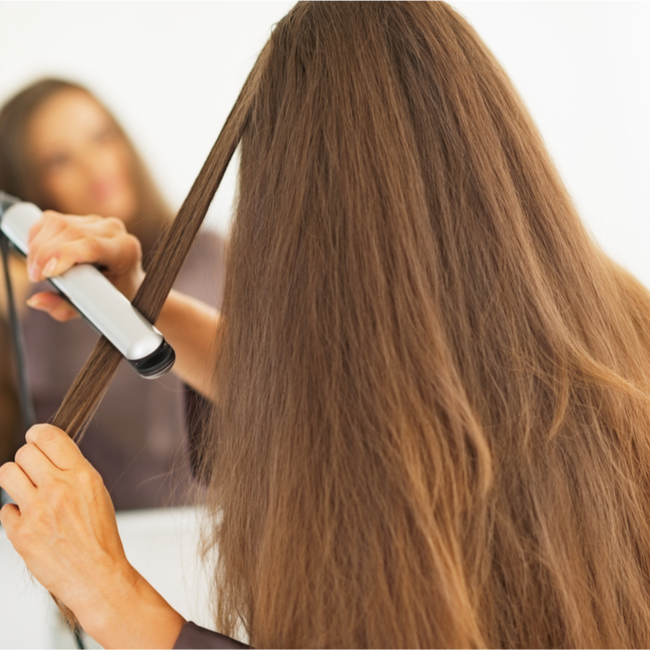Heat styling is a great way to diversify your look in the new year and breaking out the curls or a sleek and straightened ‘do can quickly elevate your appearance and offer nice variety from your everyday vibe. But while putting heat on your hair may give your locks a boost in the short term, high temperatures can ultimately cause significant damage to your strands, even putting you at risk for hair loss over time. It may come as no surprise that using heat on your hair is not the best idea if you’re already experiencing fallout, but there’s one mistake you may be making that’s worsening the state of your hair and nearly ensuring thinning locks.


Using Heat on Dirty Hair
Although washing your hair everyday has been shown to strip your scalp of the essential oils to keep your strands healthy, using heat on dirty hair might have even more significant consequences when it comes to breakage and fallout. “A huge heat styling mistake [we] commonly see is people consistently styling their hair with high heat on hair that’s not clean,” explains Sharie Wilson, professional hairstylist and co-founder of DreamGirls Hair. “When you continue to do this over time your hair begins to break off, resulting in split ends, see through hair, and shorter pieces around the edges and crown of your hair that have broken off due to heat damage.”
Clean hair is naturally devoid of heavy product buildup at the roots, making it safer to apply heat to provided you’re using a protectant. When you go several days without washing your hair, oils, dry shampoo, and other styling products may gather at the scalp, putting your locks at risk of breakage when heat is used to style, especially if you’re opting for higher temperatures. “When styling your hair with heat it is important to thoroughly cleanse your hair prior to remove dirt, oils, and older products sitting on top of your hair,” warns Tonya Thompson, hairstylist and co-founder of DreamGirls Hair.
“We highly recommend using the Renewing Shampoo from DreamGirls Healthy Hair Care System which cleanses the hair and scalp without the harsh stripping agents that could dry out your hair,” she adds. Ensuring that your hair is clean and hydrated will reduce the risk of breakage, as dry strands are more likely to snap and fall out from the root. While regularly using heat on dirty hair may increase the chance of fallout, caring for your strands properly in the interim should help to negate some of the potential damage that your styling may cause.
In general, it’s not a great idea to apply heat to your hair on the daily, but if you do “it is important to use heat at the lowest setting, in addition to using a heat protectant to shield your hair from excessive heat when styling daily,” suggests Wilson. Heat protectant will not completely block the damage heat styling will cause, but it can create a barrier to reduce some of the impact so your strands don’t end up as fried as they could be.
However, if you’re already noticing fallout, breakage, and split ends, it may be best to preemptively reduce the amount of heat styling you’re doing, particularly on dirty hair, to keep the issue from progressing. Hair loss is ultimately a culmination of several causes, but heat styling does your locks no favors so keeping it to a minimum and only working on clean hair will give you a better chance at maintaining beautiful locks down the line.


























